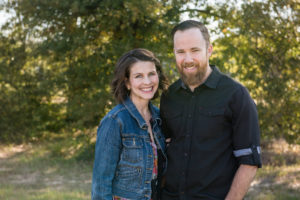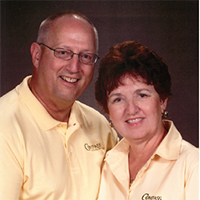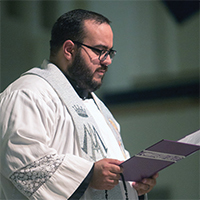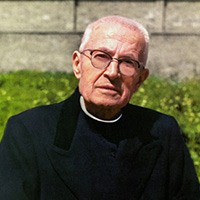Guess Who
As the teens arrive for youth ministry, tape the name of a Bible character to the back of each person. They cannot see the name and only the other participants will know which character they represent. Each person can ask questions about who they are (for example, male or female, Old or New Testament). The first person to guess who they are wins, and so on. You can have multiple prizes as each member guesses who they are.
“Ha ha” game.
Youth stand in a circle. One youth is designated to begin. He or she turns to the next youth and states “ha” while staring into their eyes. There are no restrictions as to how to say “ha”. It can be stated loudly, softly, drawn out, sung, anyway the speaker feels he can induce laughter in the listener. If the speaker or the listener laughs (even a little giggle), he or she is out. The recipient then turns to the next youth and states/sings “ha ha”. The game continues to “ha ha ha”, “ha ha ha ha” and finally “ha ha ha ha ha”, before going backwards – four “ha’s” – three “ha’s” and the like.
Continue around the circle until all but one person is left who, then, can be crowned “stone faced champion”. The game is equally fun for those who have gone out as they watch their friends try to induce laughter in others
Human Alphabet
As teens enter the room, give everyone a pre-typed sheet of paper with each letter of the alphabet on the vertical left side. Everyone attempts to find out something about others that starts with one of the letters. Put the teen’s name and info on a line. Cannot use the same teen more than two times. Set a 5-7 minute time limit and see who has the most. Have several (small group, have all) people share interesting discoveries about each other.
Sample:
A B C D Examples:
Jamal broke his arm in 8th grade. Alana plays basketball.
Nissa’s favorite candy is Snickers.
Evan’s Dad is a dentist.
Human Foosball
The game is just like table top foosball but with real people. Use a soft foam ball, approx. soccer ball sized in order to avoid accidental injuries from aggressive kicks and air-born balls. To mark you “court” use painter’s tape on a gym or hall floor to create the space – known as a lane -for each row of players. Each lane should be about 4ft wide and go the entire width of your court. Number each lane. All Even lanes are for team A, Odd lanes are for team B. Mark off a Goal at each end of the court using 2 chairs about 3 feet apart. Or create a goal on the wall that is a 3ft by 3ft square using painter’s tape
Divide the teens into 2 teams of 20 to 25 players. Each team then divides up into groups of 4 or 5 players per row and then each row of players gets one lane. All players on the same team will face the opposite team’s goal. Row Players in each lane need to hold hands at all times. Each row of players can only move side to side and must stay within their lane, they cannot go forward or backward. They move as a group all going side to side together. They cannot step outside of their marked lane. Players can only kick the ball with their feet, they cannot use their hands or head.
The game starts by rolling the ball into play from the mid-court starting area between the two teams. Players try and kick the ball forward past the opposing team. Play continues until a penalty occurs, the ball is out of reach or out of bounds, or a goal is missed, or is scored.
Players cannot use their hands. If they touch the ball with their arms or hands, it will be a penalty. The ball must stay below the hands of the team or a penalty is called on the kicking team. When a penalty occurs, the ball should be placed back at mid court at the feet of one of the non-offending team and the game restarted.
Hula Hoop Relay
Create teams which have an even number of players and have them line up in single file lines. Instruct the teens that they must take the hand of the person on their right and left. The first and last teen in line will only be holding the hand of one person. Explain that each team must pass the hula hoop down the line without breaking their grip. If they unlink hands at any point, the team must start over (or they incur a penalty that you create). When you tell the teams to start, they must pass the hula hoop down the line as quickly as possible by contorting their hands, arms and entire bodies so that they can fit through the hula hoop and then pass it to the next person
Human Knot
The Human Knot is a classic game that gets the youth to trust and work with each other. You have each person get in a circle and hold hands with someone, who is not on either side of them, and you cannot hold the same person’s hand. Then the youth try to untangle themselves (without releasing hands) and get back into the circle. This game takes room but no supplies and makes the youth work together.
Human Scrabble
Break the youth up into groups of about 10. Give each person a sheet of paper, marker, and a piece of tape. Have each person write a letter of the alphabet on the paper and tape it to the front of his or her shirt. Now give the teams 4 minutes to come up with as many words as possible using the letters on their chests. Minimum 3 letters per word. Give each team 2 points for each letter used and an additional 5 points if it is a biblical word. The team with the most points wins.
Hungry, Hungry, Alligators
Supplies = For each team you need 1 rolling mechanic, furniture dolly, or oversized skateboard (4 wheels, teens will lay on this) and one plastic tub or crate. Lots of balloons.
Place balloons in center of the room, scatter the teams around the outside.
One teen lies belly down on the dolly and bends their knees so their feet are now toward the ceiling. They hold their crate straight out in front, open side down (Alligator). Another teammate (driver) grabs the ankles of the teen on the dolly. On the word go, the drivers push their alligators into the center. The alligators try and capture balloons with their crate, when filled the driver pulls the alligator back to the team area with the captured balloons. After 2 passes have other teammates become the alligator and drivers, keep switching until all have had a turn. When time is up the team with the most balloons in their area wins. Add lots of fun music.
I Love My Neighbor!
Everyone sits in a circle on chairs except the teen who is “it”. “It” begins by saying “I love my neighbor especially when they…(blank). “It” fills in the blank with something that applies to him/ her and others in the group. Everyone to whom that applies, including “it” gets up and runs to get a different seat. Whoever is left standing is the “it” in the middle.
Example: I love my neighbor especially when they….. wear shoes, have earrings in, are 15 years old, learn Spanish.
I Love You Baby
Any sized group can play. Place everyone’s name in either a “mens” or “womens” hat. Everyone sits in a circle, and one person is picked to start the game. They choose a name from the hat of the opposite gender (guys choose a gal’s name; ladies choose a gent’s name). The basic play goes like this: The person who is “it” says to the person whose name they drew, “I love you baby, wont’ you give me your smile?” The person they ask must reply without smiling “I love you baby, but I just can’t give you my smile” If they can answer without smiling, the person who was “it” must draw another name and ask the question again until someone smiles.
Then they’re it. The person who is “it” can use whatever theatrics they’d like such as getting down on one knee, batting eyelashes, making faces, silly voices, getting very close, singing, etc., to try to get the other person to smile. You should announce in advance if they can or cannot make physical contact such as sitting on a lap.
I Never
This game requires a bag of Starburst candy or Hershey’s kisses, etc enough for everyone in the group to have 6 or 8 pieces. Tell the teens to each take 6 to 8 pieces of candy, but they are not to eat them. Group the teens into circles of 6 to 8 participants. Going around the circle a teen will state something they have never done that they think the others have – for example “I’ve never been to Disneyland”. If the other teens have done the statement (been to Disneyland) they must give the speaking teen one of their Starburst/Kiss. If they have not done the statement, then the speaker must surrender a piece of candy to them. Keep going around one or more times until the time for the game is up. Teens can eat the loot only at the end. Have extra candy so no one is left out.
Variation: Bluffing – If a teen challenges the speaker’s statement and the speaker was trying to bluff the group
the speaker must surrender all their loot to the challenger.
Landmines
Materials needed, blindfolds, Water balloons (can be substituted by Styrofoam coffee cups, or various other dry things for inside use), and students. Set up the minefield by randomly placing the water balloons in a marked section of ground (a concrete slab or basketball court work well for this. grass also works, but you will need to set boundaries). Teens are in groups of about 4 or 5. Give each team a blindfold. Put the blindfolds on one member of each team. The point of the game is for the team to get across the minefield with the fewest casualties the fastest. If a person touches a mine he/she is out (if it bursts water on them, it just makes it more fun). The team members must be their eyes and tell them which way to go. The blindfolded people crossing the field must stay within the set boundaries, and only one person per team may be on the minefield at a time (so they can’t lead them by touch). Team members help each other by shouting directions. Works best if mines are close together and if teams are close together. Sponsors may yell out random directions to try to throw them off. The trick is (don’t tell the kids this till after it’s over) for the person in the minefield to pick out a certain voice and listen to that one voice. Then its easy to connect this to listening to the voice of God above all others.
Line ‘em up
The leader calls out what the criteria for the lineup is, for instance by height, and people line up. When the line has been formed the teens turn to their neighbors and learn each other’s name. Repeat four or five times with new criteria. Or break a large group into several teams and have them compete as to who can get lined up correctly the fastest. Add simple prizes lie a bag of chocolates for the winning team to share.
Criteria ideas:
Age, Height, Alphabetically by name, street, school, or middle name; Shoe size; hair length or color; birth month; number of siblings; Height they can jump; rainbow order of shirt color; etc.
Living Sculpture
Toilet paper, saran wrap, and tin foil are used to make sculptures out of one person per team. The team with the best sculpture in the time allotted wins. The “sculpture” volunteer stands in a position while the team wraps toilet paper, saran wrap and tin foil around him or her to create a “work of art.” This game can also be played using shaving cream – for added fun in the summer use squirt guns to remove the shaving cream. Another twist is to base the sculptures on characters from popular movies, TV shows or even Disney cartoons.
Marshmallow Game
You will need large marshmallows for this game. Divide the youth group into two teams (maybe more teams depending on how many teens are present). Give each teen a marshmallow. The first player must lick the marshmallow, stick it to their forehead, and run to the finish line and back, to tag the next person. The next player does the same, until each player has had a turn. If the marshmallow falls off, they have to stop, stick it back on, and continue. The first team to be sitting in a straight line wins! Play upbeat, energetic music while game is played. The music starts on “Go” and stops when a team wins.
Marshmallow Towers
Use masking or painters tape and define a territory of a circle or box approx. 8 feet in diameter for each team. The team territories should be about 8 to 10 feet apart and grouped together rather than being in a line. Gather teens into groups of 5 to 7. Give each team 12 or more large plastic cups and one bag of large marshmallows. The leader calls go. Each team tries to build a tower using all of their cups. At the same time they throw marshmallows at the other team’s towers to try and knock them down. Team members should stay in their own circle “territory”. Sooner or later though the teens will start to just run and throw marshmallows at each other, it’s okay let them have fun ☺ Add music!
Minute Movies
Break the teens into groups of 6-8 people per team. Each team has 5-10 minutes to create a skit of one minute in length which represents a movie. When time is up have each group give their movie in a minute skit to the whole youth group as an audience. The audience tries to guess the movie. Award points or trophies if desired. Added twist no words can be used in the skit.
Mix & Meet (the M & Ms game)
Break into groups of 10-15, each group has a bowl or bag of M&Ms. Each person gets a random number of M&M’s, however they cannot eat them yet.
Assign a different meaning to each color:
Blue = family, Green = school, Yellow = friends, Red = hobbies, Brown = music/movies
However many M&Ms they have in their hands, that is how many facts they have to tell. For example, if they have three blue, they would have to say three facts about their family
Mummy
Break participants up into two equal groups. Select 1 teen from each group to be the Mummy. Give each group two rolls of toilet paper. Start with “GO” and the first group to completely wrap their Mummy in toilet paper (from head to toe) wins. They must use one full role. For round two give a prize for the most creatively posed Mummy.
Musical Squirt Gun
Break into groups of 6 to 8. Each group will need a standard toy water squirt gun filled with water. On the word “Go” (or the start of music) the squirt gun is passed around until the music stops or until the leader says, “Stop”. The person who is holding the squirt gun at that time is out. But before they leave, they may squirt the person on their left twice, or on their right twice, or once each. The last person standing wind. Note – the squirt gun should be passed with two hands and received with two hands (otherwise it will be frequently dropped and will break). It is best to have a second loaded squirt gun on hand to be substituted for the empty one.
Number and Words
Teens pair up into groups of two facing each other. They have their hands behind their backs. The Leader calls out a word or phrase that has up to 10 letters in it. On the word of the Leader, the players hold up a combination of fingers 1-10 to match the number of letters only. First partner who gets it right wins. This is an elimination game; have a prize for the final winner.
Ninja
Players stand in a circle. Players take turns, going around the circle. The player who is up can make one quick motion in order to slap the hand of another player. The motion must last not much more than 1 second. The player freezes in the position he or she ends in. The player being assaulted must try, also with one quick move, to evade being hand-slapped. This move must also last not much more than 1 second and the player then freezes in whatever position he or she ends in. If a players’ hand is slapped, they are eliminated from the circle. If a players’ move is not swift and quick, they are eliminated from the circle.
Olympics
Have a one night or a summer long Olympics. Create your own events suggestions include volleyball, spelling bee, charades, darts, track and field, Bible trivia and pie eating. During the Olympics church members come and are judges of events. Before judging, they share their faith journey with the youth.
Open or Closed?
This icebreaker is a simple as passing a book around a circle. The leader starts and states to the person to the left, ‘ I pass this to you closed’ or ‘I pass this to you open’. The leader may pass the book actually open or closed regardless of what is stated because the open or closed status depends not on the state of the book but whether or not the leader’s legs are crossed or open at the time the book is passed. It usually takes five or six times around the circle for people to “get it”. Place youth leaders at various points on the circle so that at least some people know how to play the game from the beginning. This is a good lead in to a discussion on the topic ‘things aren’t what they first seem’ and ‘don’t judge a book by it’s cover’.”
Organized Mingling Mixer
Get an even number of teens and staff in the room. (Add your staff as needed to make the number even.) teens and staff mingle to music and shake hands. When the music stops, everyone must find another person and shake hands. The leader calls out a question they must ask of whomever they are shaking hands. Use fun and serious questions Hint: you can use questions that will kick off that night’s discussion.
Sample questions:
- What is your favorite pizza?
- What is your favorite kind of weather and why?
- If you could go anywhere on a vacation for a week, where would you go?
- What would you do with $1,000 dollars cash right now?
- Share a moment in your life where you remember being the
- Share a moment in your life where you were really









 Kimberly Kay Cox
Kimberly Kay Cox







 Mark Mogilka
Mark Mogilka





























 Armando Cervantes
Armando Cervantes Anna Betancourt
Anna Betancourt
 Andrea Chavez-Kopp
Andrea Chavez-Kopp